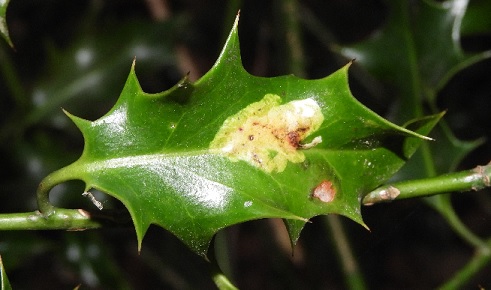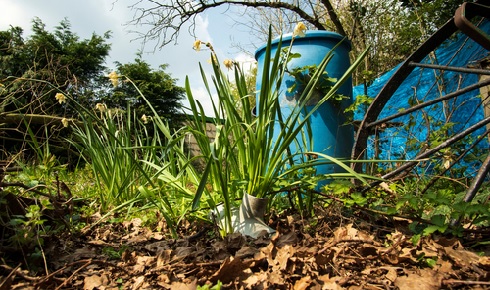Mini-miners in your garden

The Biologist is pleased to launch the first of a series of seasonal columns on what wildlife recorders can look out for in the UK right now
May 31st 2021
The warmer months provide a bounty of biological recording opportunity as a significant proportion of the UK’s 7,800 vascular plant species are at their most evident, with flowers in bloom and leaves unfurled. The development of this glorious foliage assists the recording of more than just the plants themselves. Without too much time or effort spent searching, you can find various intricate patterns etched onto the plant’s tissue. These green corridors are the work of the larvae of various leaf-mining insects spanning a wide range of taxonomic groups.
Flies and moths are common culprits, with beetles and wasps (particularly sawflies) also making their mark beneath the epidermis of a variety of plants. For gardeners especially, leaf mines may seem an unsightly and undesirable feature of their flower beds, but they very rarely cause any significant harm to the plant. To the recorder they are in fact a blessing: while adult leaf miners are difficult to identify, even closely related species can produce unique and distinctive leaf-mine patterns, allowing much easier identification by citizen scientists at all levels of experience.
Given the range of taxa that produce mines, their structure and form can vary considerably. The most recognisable mines are those that snake across the leaf, becoming wider as the larva grows in size and sometimes ending in a terminal blotch. Some mines are entirely composed of a blotch, occasionally boxed in by two of the leaf’s major veins. The least conspicuous miners form their corridors in the stem, fruits or the roots of the plant.
With so many species of leaf-mining insect in the UK, some are impossible to identify to species level without rearing the larvae to adulthood. However, with information about the foodplant and clear photos of the mine, identification of a large proportion of the British fauna is possible. While some species of leaf miner are strongly polyphagous (feeding on plants from multiple families) or oligophagous (feeding on plants from several genera within the same family), many are monophagous and feed only on a few closely related plant species, narrowing down the possibilities significantly.
 James McCulloch will be writing a column in each issue of The Biologist this year on how to help biological recording efforts in each season of the year.
James McCulloch will be writing a column in each issue of The Biologist this year on how to help biological recording efforts in each season of the year. Identification and recording
Identification of the leaf miner is often based on the shape of the mine and where on the leaf it originates and develops, as well as the pattern of frass (poo) inside the corridor, for which a backlit photo of the leaf is useful. Several websites enable you to identify leaf mines by foodplant – for example, ukflymines.co.uk covers the whole range of leaf-mining insects.
A good place to start with recording leaf miners is by looking at holly – only one insect species in the UK, the agromyzid fly Phytomyza ilicis, forms leaf mines in holly leaves and is therefore easily identified.
The National Agromyzidae Recording Scheme, receives and analyses records of this large family of predominantly leaf-mining flies in order to improve our understanding of their ecology and taxonomy. Records of agromyzids and other leaf miners can be submitted via iRecord (www.brc.ac.uk/irecord) with a supporting photo and provide a valuable contribution to science.
James McCulloch, winner of the Gilbert White Youth Award for terrestrial and freshwater recording, will be writing a seasonal column on recording for the summer, autumn and winter issues of The Biologist this year.


